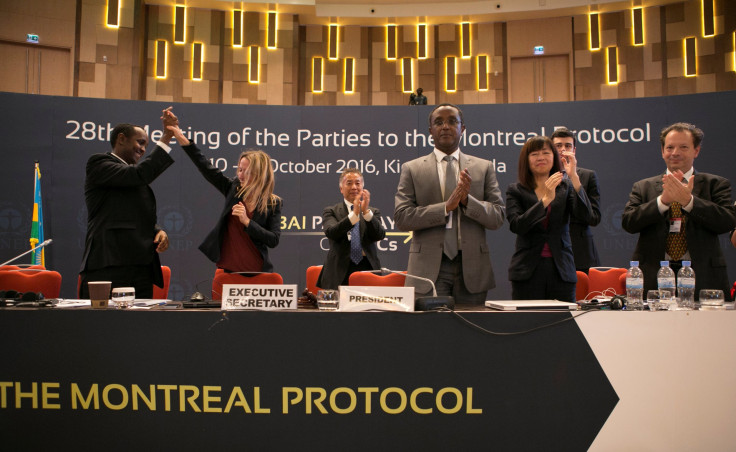Ozone Layer Hole Slowly Recovering, Research Shows

The hole in the ozone layer is gradually recovering due to a depletion of the ozone-destroying chemical, chlorofluorocarbons (CFCs), in the atmosphere, according to results of a research by NASA's Goddard Space Flight Center.
According to a report by NASA, measurements taken during the research showed that there was a marked decrease in chlorine in the ozone layer, a result of an international ban on chlorine-containing manmade chemicals known as CFCs over the years.
This caused a 20 percent decrease in ozone depletion during the winter in 2016, compared to the 2005 statistics by NASA’s satellite Aura.
Atmospheric scientist and one of the researchers, Susan Strahan, said, “We see very clearly that chlorine from CFCs is going down in the ozone hole, and that less ozone depletion is occurring because of it.”
The report stated when the process of ozone depletion takes place, chlorine was found in various molecular forms, most of which were not measured. However, after chlorine destroyed the available ozone particles, it reacted with methane and formed hydrochloric acid, a gas which was measured by the Microwave Limb Sounder (MLS) installed in the Aura satellite.
Strahan said, “By around mid-October, all the chlorine compounds are conveniently converted into one gas, so by measuring hydrochloric acid we have a good measurement of the total chlorine.”
The report further stated that nitrous oxide existed in the stratosphere which had a similar behavior to that of CFCs. CFCs were decreasing at the surface but not nitrous oxide. So if there was a decrease in CFCs in the stratosphere, then overtime, it means less chlorine would be measured for a given value of nitrous oxide, the report stated.
By comparing the measurement of hydrochloric acid made by MLS and nitrous oxide each year, it was determined that the overall level of chlorine was decreasing at a rate of 0.8 percent per year. The report stated that a 20 percent decline in ozone depletion during the winter months from 2005 to 2016 was expected.
Strahan stated, “This is very close to what our model predicts we should see for this amount of chlorine decline.”
“This gives us confidence that the decrease in ozone depletion through mid-September shown by MLS data is due to declining levels of chlorine coming from CFCs. But we’re not yet seeing a clear decrease in the size of the ozone hole because that’s controlled mainly by temperature after mid-September, which varies a lot from year to year,” she added.
According to a report by Ars Technica, a technology and science news website, during the 1970s and 1980s, evidence had shown that the ozone layer was getting damaged due to CFCs which resulted in an ozone-free “hole” over the Antarctic. Nations and conglomerates were forced to take actions due to the above.
The companies started to search for CFC alternatives. The nations however made an agreement which tried to limit the use of substances which would result in the depletion of the ozone layer. This agreement was known as The Montreal Protocol.
The report said that if was difficult to determine whether the protocol was having the desired effect or not. This was because as ozone was generated in the stratosphere in the earth’s atmosphere, the level of its eradication changes from time to time. Also, the recovery levels of the ozone layer was said to be so slow that some people were found to have claimed that the whole issue was a conspiracy or a scam.
However, the result of the research showed that The Montreal Protocol was indeed having an effect, stated the report.
The study was published Jan. 4 in the journal Geophysical Research Letters.
© Copyright IBTimes 2024. All rights reserved.






















